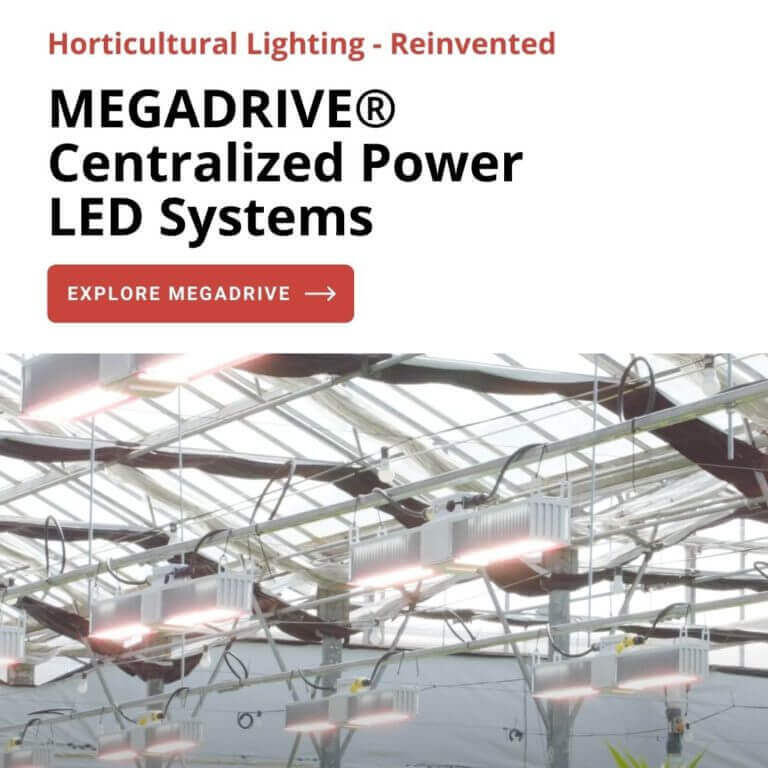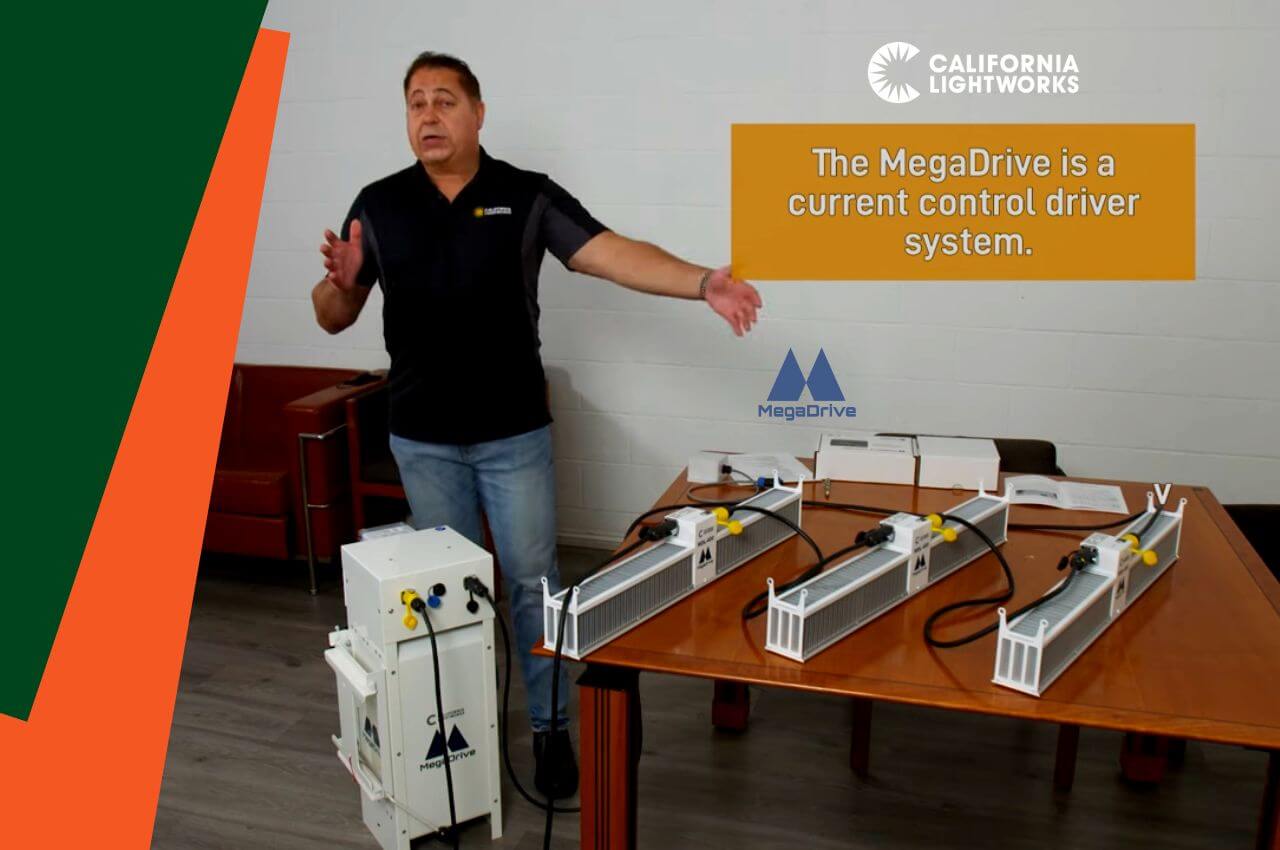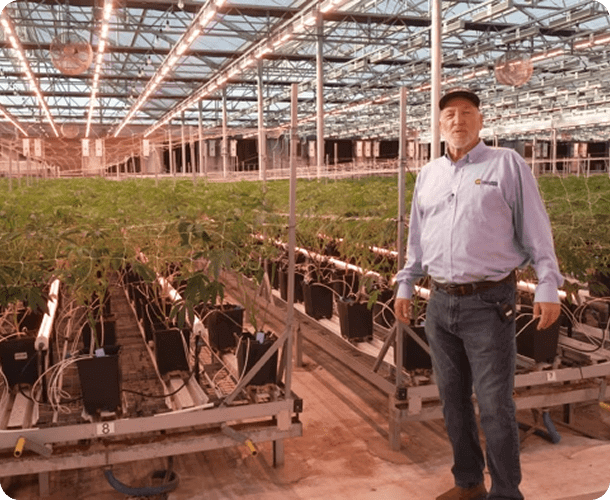As a grow light manufacturer, we answer a lot of questions about multilevel farming lighting systems. Many professional growers wonder if it’s time to elevate their operation . . . literally.
With tight competition and license restrictions, cultivation pros are forced to do more with less space. Not to mention, the shifting climate has outdoor growers thinking about moving their operation indoors—a costly endeavor.
The field of multilevel farming represents true adaptability . . . or so it seems.
With all the buzz about growing upwards, cultivators hear a lot about the benefits and get blind-sided by the disadvantages. That’s not to say multilevel farming is the wrong choice. It’s just not the right choice for everyone
Before you invest in multilevel infrastructure, consider these lesser-known pros and cons.
The Benefits of Multilevel Farming
First, if you’re new to indoor cultivation, you should know that “multilevel farming” and “indoor growing” are not interchangeable terms.
You may hear people celebrating multilevel farming benefits such as climate control, reduced water consumption, and year-round cultivation. These are advantages of multilevel farming, but only because multilevel farming happens indoors. “Multilevel” has nothing to do with it.
In fact, some of these indoor benefits actually become more complicated and less beneficial with a multilevel infrastructure. (More on that in a moment.)
Multilevel farming really only offers one benefit: maximizing the square footage of your grow area.
Now, this is a notable benefit, especially if:
- You want to expand your operation without the expense of expanding your facility.
- You want to expand your operation but your license does not allow you to expand the square footage of your facility.
In such circumstances, multilevel farming seems like the logical option, right? If you can’t grow outward, you might as well grow upward.
Well, this is where it gets complicated.
The Myth of Doubling or Tripling Yields
Most growers assume that adding a second tier of plants means they double their yield. A third tier triples their yields. That’s the theory, and the logic is understandable.
Unfortunately, it actually doesn’t work that way . . . especially not if you’re growing flowering plants.
Traditionally, multilevel infrastructure leaves only 1-2 feet for plants to grow between shelves. This means any flowering plants you place on your shelves cannot grow to their full height. This means they also cannot produce the same number of buds that they would on a single-tier system.
You also must consider the limits of multilevel farming lighting.
In a traditional indoor grow space, you can achieve what is called “volumetric lighting.” This is when a plant is able to access light from multiple directions. This happens in nature as the sun moves through the sky.
It also happens in grow facilities where a single plant has exposure to multiple light fixtures.
The effect of this 3D lighting is that photons reach the plant from all angles and penetrate through the canopy. You get a Christmas tree shape and the same size buds on the top, bottom, and sides of the plant.
A multi-tiered system creates what we call “planar lighting.” This occurs when a light source is only able to reach a single plane. Due to the tight spaces of grow shelves, multilevel cultivated crops only access light through their top leaves.
As a result, you only get quality buds on top. Adding a second layer may double your plants, but it doesn’t double your yield. You can expect a yield increase of only about 50%.
You may think an increase of any kind is still an increase. But what about the cost of multilevel infrastructure and maintenance?
Multilevel Farming Lighting and Other Hidden Expenses
If you’re establishing an indoor facility for the first time, you’re likely to find that it’s far more expensive to set up a multilevel operation.
If you already have an indoor facility and you’d like to expand upward, you may be surprised by the expense. There are far more costs involved than the purchase price of a multi-tiered racking system.
Multilevel Farming Lighting
Horticultural lighting is a major expense for all indoor growers. But it’s especially major for multilevel growers.
As we established, adding a second tier does not double your yields. But it does double your lighting expenses.
For one thing, the purchase price of multilevel farming lighting doubles simply because you require twice as many lights. You also see a drastic increase in installation costs. Once you’re up and running, you have to use more power to operate your multilevel farming lighting.
Environmental Controls
Cultivators who add new levels to their indoor grow facility often make a heartbreaking discovery:
The calculations they made for their original HVAC system no longer work with this new system.
As all growers know, where there are lights and plants, there is going to be heat and humidity. And when you have lights and plants at multiple levels, you create micro environments. Instead of worrying about the climate within your entire facility, you have to worry about the climate at each tier.
Air circulation also becomes more complicated in multilevel farming. You must re-evaluate your system to make sure there’s airflow between the shelves.
The Cost of Labor
Expanding your crop is always going to mean increasing your labor expense. But expanding upward is almost always the more costly option.
Caring for plants at multi-levels is more difficult and more time-consuming. Moving pots from up high takes skill and focused effort. Observing plant health and inspecting for quality is much more difficult at upper tiers and within cramped shelves.
Above all, multi-level cultivation poses certain safety risks. You must take extra measures to ensure your methods for reaching top-tier crops are OSHA-compliant.
With all these added expenses, a 50% increase in yield does not necessarily equal a similar increase in profits. You lose much of that added revenue in setup and operations.
The Problem of Mold, Mildew, and Pests
Another potential concern for multilevel farmers is the question of crop quality.
Because it is much more difficult to manage the environment in a multilevel facility, you are at a higher risk for mold, powder, and pests. Mildew is especially common in shelves, due to high humidity and limited circulation.
Once again, you have the added challenge of trying to monitor crops at different levels and in enclosed spaces. It becomes very easy to miss infestations and fungal attacks in the early stages when you have the best chance of saving your crop.
How to Increase Square Footage Without a Multi-Tiered Racking System
Of course, all the above issues do not eliminate the concern that led you to consider multilevel farming in the first place.
If you cannot expand your facility horizontally, how can you increase your yields?
First, if you’re not using premium LED grow lights, you might consider upgrading your indoor lighting design. LED light technology has changed, and HPS lights are officially outdated.
High quality LED lights provide the perfect spectrum at high intensity to boost your yields and increase potency.
Variable spectrum LEDs like our SolarSystem series even allow you to program light recipes to speed the grow cycle. This results in more harvests per year.
As for increasing the actual square footage of your crops, consider rolling benches.
If you currently use stationary benches, you know how much of your square footage is dedicated to aisle space.
Rolling benches allow you to spend a much larger percentage of your horizontal space on plants. With this technology, you can easily move the position of your benches to create an aisle wherever you need it. Instead of, say, ten aisles, you now have one.
The rest of that space can now be occupied by plants.
The Best Option for Multilevel Farming Lighting
If you still feel multilevel farming is the right option for you, allow us to at least make a few suggestions.
First, avoid crowding your plants as much as possible. Resist the temptation to pack in extra tiers just because you have dedicated multilevel farming lighting and can safely hang your lamps twelve inches from the canopy.
Give your crop plenty of room to stretch out, receive adequate airflow, and benefit from multi-directional light. Opt for several feet between shelves, and choose top-quality LED grow lights that could help you beat that target of a 50% yield increase.
We recommend the GH Pro 340 for multilevel farming lighting. These lamps are intense enough to boost yields but mild enough to hang close to the canopy. They feature wireless digital spectrum control and industry-leading efficiency.
If you’d like to learn more about this multilevel farming lighting option, you can contact our U.S.-based team here. We’re also happy to answer your questions about indoor growing and provide a free, no-obligation indoor light plan.
We know indoor farming comes with countless questions and complicated calculations. Our goal is to provide the support you need to succeed. Let us know how we can help.





